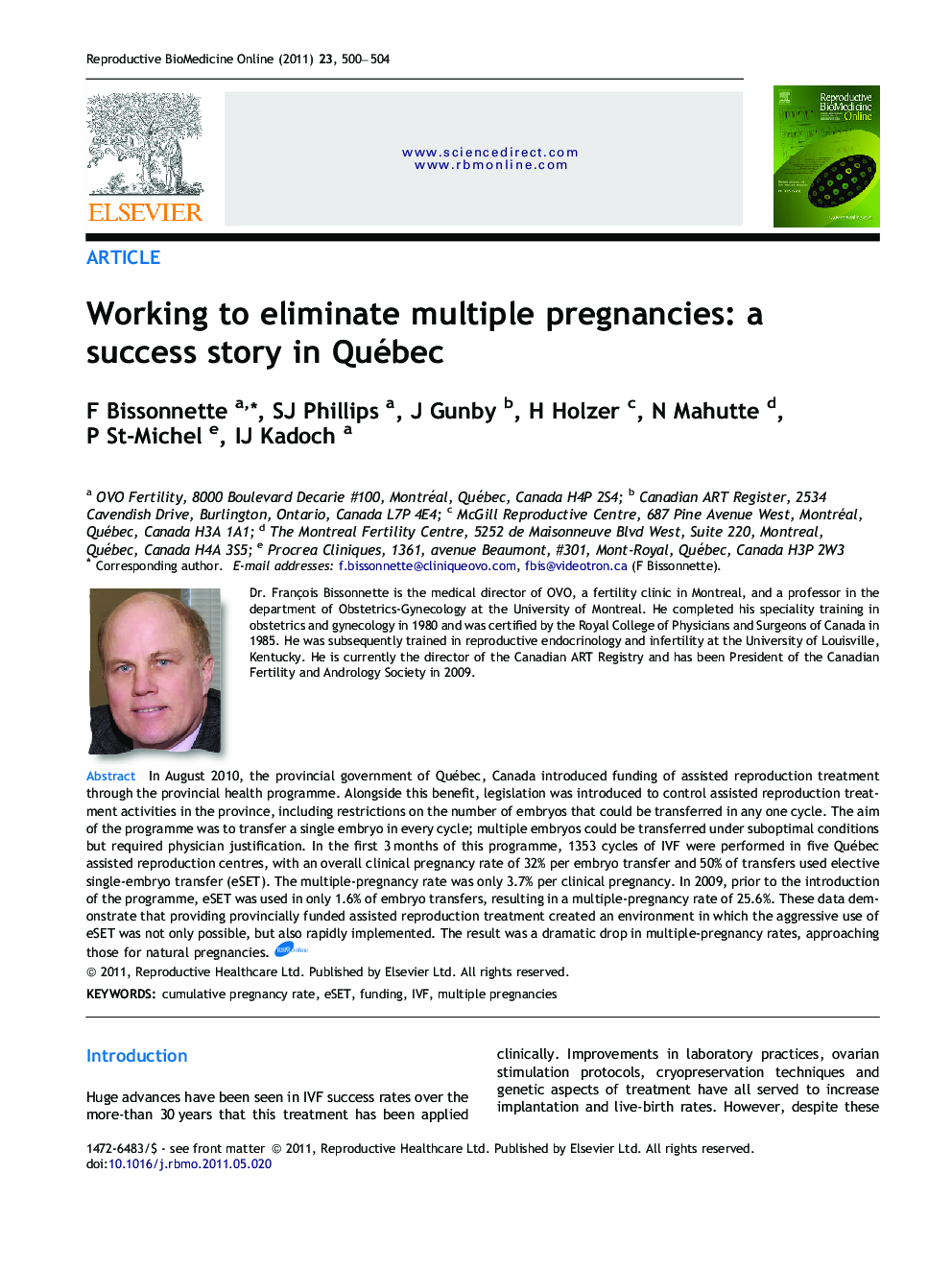| Article ID | Journal | Published Year | Pages | File Type |
|---|---|---|---|---|
| 3971132 | Reproductive BioMedicine Online | 2011 | 5 Pages |
In August 2010, the provincial government of Québec, Canada introduced funding of assisted reproduction treatment through the provincial health programme. Alongside this benefit, legislation was introduced to control assisted reproduction treatment activities in the province, including restrictions on the number of embryos that could be transferred in any one cycle. The aim of the programme was to transfer a single embryo in every cycle; multiple embryos could be transferred under suboptimal conditions but required physician justification. In the first 3 months of this programme, 1353 cycles of IVF were performed in five Québec assisted reproduction centres, with an overall clinical pregnancy rate of 32% per embryo transfer and 50% of transfers used elective single-embryo transfer (eSET). The multiple-pregnancy rate was only 3.7% per clinical pregnancy. In 2009, prior to the introduction of the programme, eSET was used in only 1.6% of embryo transfers, resulting in a multiple-pregnancy rate of 25.6%. These data demonstrate that providing provincially funded assisted reproduction treatment created an environment in which the aggressive use of eSET was not only possible, but also rapidly implemented. The result was a dramatic drop in multiple-pregnancy rates, approaching those for natural pregnancies.In August 2010, the provincial government of Québec, Canada introduced state-covered assisted reproduction through the provincial health programme. Alongside this, legislation was introduced to control assisted reproduction activities in the province, including the number of embryos that could be transferred in any one cycle with the aim of reducing multiple pregnancies, which are the major negative side effect of assisted reproduction treatment. Multiple embryos could be transferred under suboptimal conditions but required physician justification. In the first 3 months of this programme, 1353 cycles of IVF were performed in the five Québec-based assisted reproduction centres, resulting in an overall clinical pregnancy rate of 32% per transfer and with 50% of transfers of a single embryo. The multiple-pregnancy rate was only 3.7%. Prior to the introduction of the programme, the elective transfer of only one embryo (elective single-embryo transfer or eSET) was used in only 1.6% of cycles in Québec, resulting in a multiple-pregnancy rate of 25.6%. These data demonstrate that having state-sponsored assisted reproduction treatment created an environment in which the aggressive use of eSET was possible, implemented and resulted in a significant drop in multiple-pregnancy rates approaching natural levels of multiple pregnancies.
